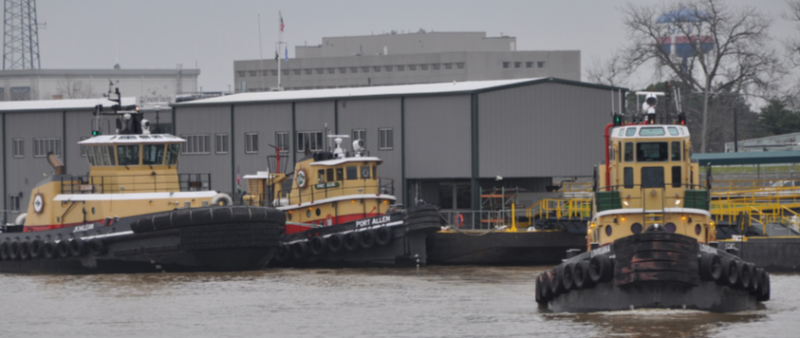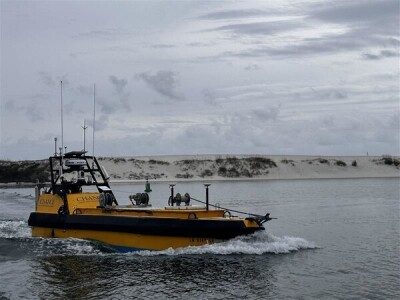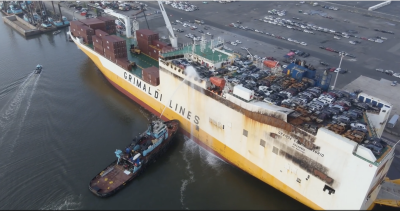In July 2016, the Coast Guard released the long-awaited Subchapter M final rulemaking that set minimum safety standards for towing vessels. An estimated 5,509 towing vessels engaged in pushing, pulling or hauling alongside, were affected by the new rule.
Section 143.230 of the rule reads that each towing vessel must have a reliable means to provide notification when an emergency condition exists or an essential system develops problems that require attention. The Coast Guard was very specific about the alarms that needed to be included, listing seven alarms involving the engine, generator, steering fluids, fuel levels and bilge levels.
It was about that time when Matrix Industrial Systems in Paducah, Ky., received a call from a towing vessel customer who would have to meet the Coast Guard’s Subchapter M compliance mandate for an acceptable alarm system. That phone call was the impetus for Matrix to start putting together its Tug Monitor Alarm System that monitors the conditions listed by the Coast Guard, said Matt Dempsey at Matrix Industrial Systems.
The Tug Monitor Alarm System consists of eight touchscreen displays: Main Engine Status Screen listing the cur- rent condition of the main engine or engines, such as water and oil temperatures and levels; a Generator Status Screen showing the same alarms; a Ship’s Services Screen with items such as gear oil and steering oil; an Alarm Condition Prompt Screen showing alarms that have malfunctioned and if they are disabled or have been enabled; an Alarm History Screen with the time and date an alarm was activated; the Main Engine Custom Setup Screen is the alarms grouped with a specific engine; the Alarm Condition Setup Screen has the analog temperature alarms being monitored, and an Alarm Testing Screen.
The Alarm Testing Screen was created to make working with the Coast Guard easier when they come aboard to ensure that alarms are functioning. Hit the alarm button for a particular test, say on the Aft Generator oil temperature, and “the alarm will go off and they know the alarm is functioning properly,” said Dempsey.
A key component of the Matrix alarm system is its failsafe feature. If a switch stops working, it goes to constant alarm until it is repaired or replaced. It’s the same for analog temperatures and pressures when there is a signal loss.
Part of the Coast Guard’s Subchapter M regulations state that the system be continuously monitoring alarm points. Thus, even if a generator shuts down, “even if you lose all the lights, our system keeps monitoring,” said Dempsey, “because it is battery backed up.”
When an alarm switch is tripped, the screen starts blinking red and alarm horns go off, whether it’s powered by the vessel’s service or the Tug Monitor Alarm System’s own batteries. The alarm “will scare you to death,” noted Dempsey.
To date, Matrix, which is located on the Ohio River, has only installed its alarm and monitoring system on river tugs. “We haven’t done any bluewater (oceangoing) tugs, but it’s kind of the same situation,” noted Dempsey.
BOENING
What Luiz Barbarini with Boening Ship Automation calls a major innovation took place this year when the company began working with vessel owners in Hamburg, Germany. They wanted to “be able to monitor their boats online and store data in the cloud.” He thinks this “is a big trend in Europe” but not nearly as prevalent in the U.S. But now Boening will be offering their monitoring and alarm system with a cloud option here.
Boening’s integrated monitoring and alarm systems are individual modular products matched to a particular vessel’s requirements. “Every boat is a different boat. Every boat needs a custom system for that boat,” said Barbarini, Boening’s managing director. Generally, the monitoring systems are “very straight forward and intuitive, with three touches you are anywhere, go anywhere to anywhere.”
Alarm systems are also “pretty straight forward.” It’s an information system that tells the crew there is a problem. The crew acknowledges the problem, “saying I read this,” said Barbarini. While the crew tries to solve the problem, the system keeps the alarm active. When the problem is cleared, the system clears the alarm and the boat’s owner can tell how long it took to solve the problem or how long the crew took until the problem deteriorated to another problem level.
If there is what Barbarini refers to as “an avalanche” of alarms, “the system is very useful to tell you who came first, who came second, so you are able to look at the system and identify what was the real cause of the problem.”
That requires a system able to monitor all systems and subsystems on a vessel. “An alarm system that knows everything that is going on in the boat and integrates all the data into one,” he said.
Hybrid powered boats that match up diesel and electrical propulsion is an area where Barbarini feels Boening’s monitoring system will play an important role, integrating propulsion to power generation to batteries. “It’s an important trend, with more hybrid boats there will be more need for technology to make them efficient.”
FINCANTIERI MARINE
Last year, the U.S. Navy awarded Fincantieri Marine Systems the design contract for a large unmanned ship that would leave a U.S. port, “go to the other side of the world, dock by itself, offload its cargo and go back to the United States without human controls,” said Simone Scafetti, Fincantieri Marine Systems technical director.
Fincantieri’s latest product, Solid, an integrated alarm and monitoring system for engines and generators that comes with its own radio and camera, was introduced in 2020. It will undoubtedly be on that Navy vessel, as well as a number of U.S. workboats.
Solid combines “monitoring, data logging and powerful analysis software. It’s the latest technology for monitoring and analysis for ships,” said Stacey Jennette, marketing manager for Fincantieri Marine Systems.
Solid does, among other things, thermodynamic and vibration analysis of engines. “If anything is going to fail, the first thing that will change is the vibration,” said Scafetti.
Since Fincantieri works with cloud services, in those cases where the company has a service agreement with the vessel operator, Fincantieri can monitor Solid generated data via a cloud. “I can talk with the operator in case they want to do some troubleshooting.” Though as Scafetti acknowledges, most vessel owners want to keep the data inside Solid and not transfer it out.
Solid can create comparison charts, say of an engine or a generator’s oil temperature, for the past three months, six months, one year or three years ago. “You know by the trend what’s going to happen in the next six months,” said Scafetti. It can also be programmed to shut down an engine when an alarm occurs.
Mount the Solid display wherever needed on a vessel, but also create an Internet system to your iPad or iPhone and then wherever you are on the boat you have control of Solid. “It will show everything,” said Scafetti.
Both Boening Ship Automation and Fincantieri Marine Systems have the “cloud” option where data can be stored on remote servers and accessed whenever needed. Thus, monitoring and alarm information is not only shown on bridge and engine room screens but is available to someone monitoring a vessel’s operation from a land-based computer.
So, if the person in the wheelhouse doesn’t notice that the bilge pump has been running for too long, the exhaust temperature is too high, or the batteries are taking too long to charge, the person at the land-based office will hopefully notice and inform the captain or make the necessary adjustment himself.
Though as Boening’s Luiz Barbarini noted, the main challenge is “you have to have someone at the screen looking at the data.”





.png.small.400x400.png)